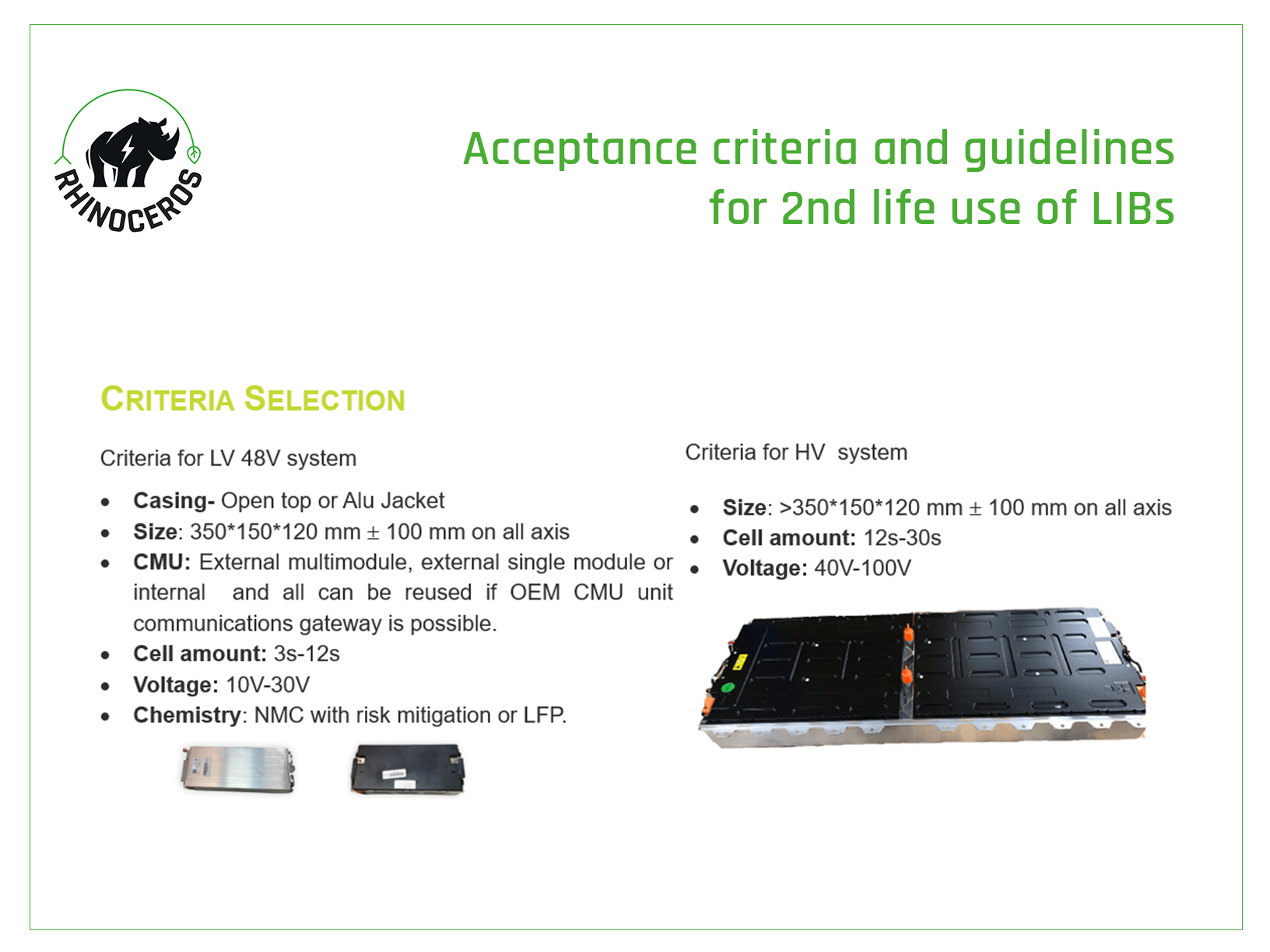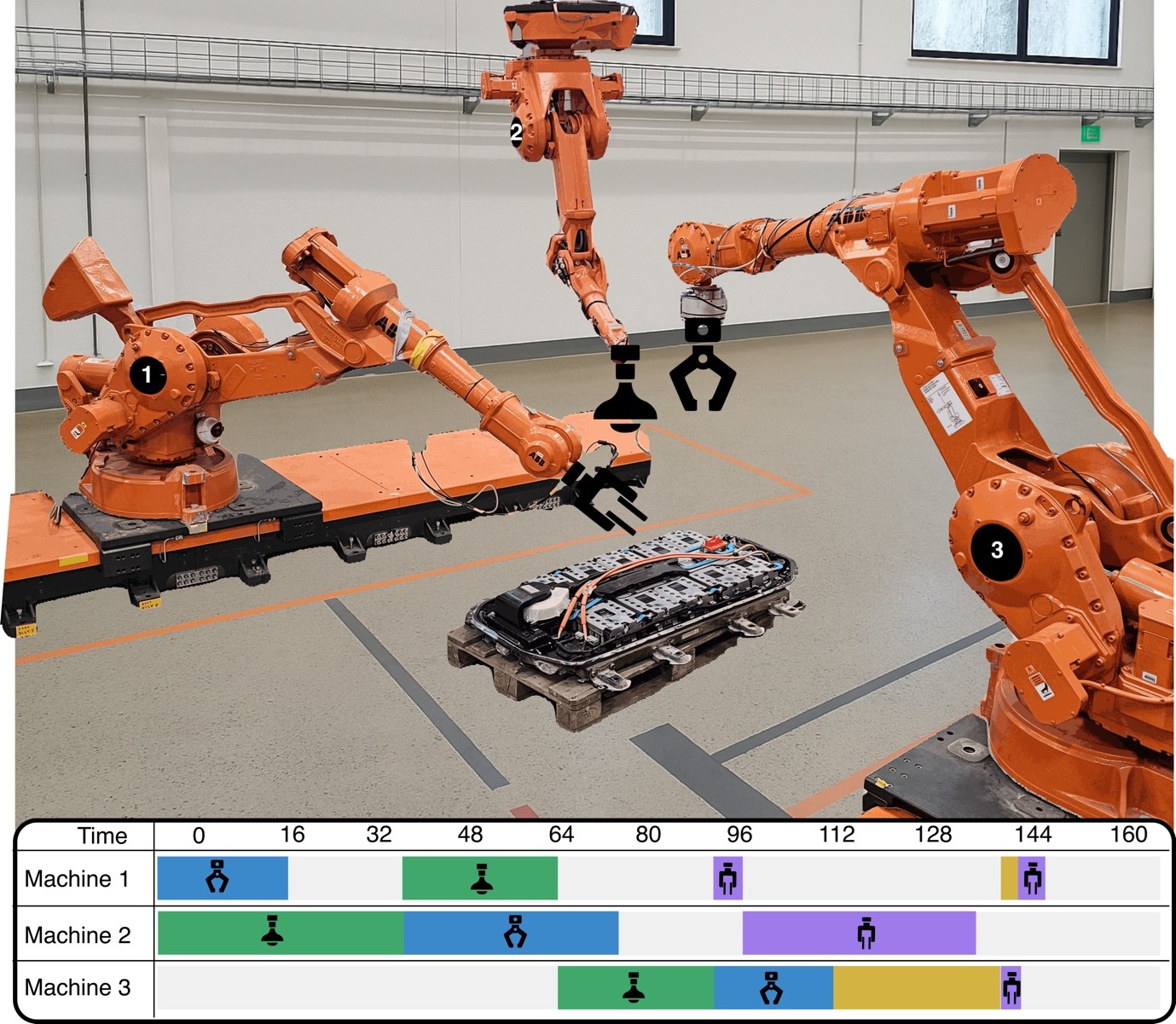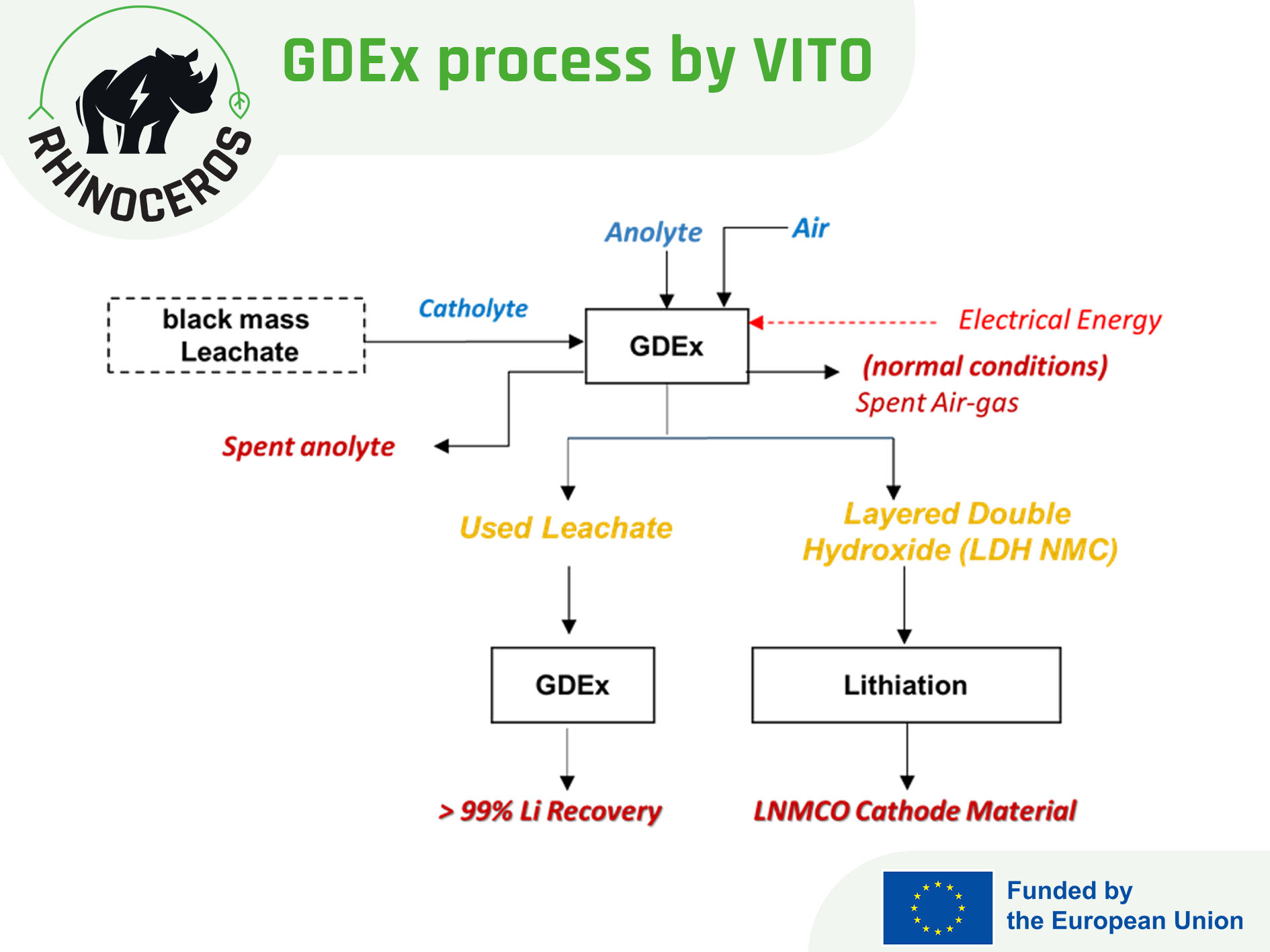News
Acceptance criteria and guidelines for 2nd life prone LiBs
16/03/2023
Within Work package 2 – Selection, characterisation and supply, partners Watt4Ever [W4E] and Accurec [ACC] assembled the database and the parameters for module selection, which will further facilitate streamline the development of electric vehicles (EV) 2nd life batteries.
The criteria were selected based on the 2nd life partner input and were adapted at module level. Partners generated a database using a sample of 200 commercial and passenger vehicles grouped in the following categories: Battery Hybrid Electric Vehicle (BEV), Mild Hybrid Electric Vehicle (MHEV) and Plug in Hybrid Vehicle (PHEV). The input received contributed to the identification of the required acceptance criteria that will help select the best modules for 2nd life Battery Energy Storage System (BESS).
Selection criteria
The database of 200 BEV/PHEV/MHEV batteries and their characteristics, including a summary of technical information for each model, has been generated. Due to the mechanical, technical and software challenges that need to be overcome for efficient module integration in deployable LV and HV BESS, the database includes the following parameters as criteria for 2nd life applications: size, capacity, Cell Management Unit (CMU), casing and cell configuration. The chosen criteria should improve the security of the dismantling process and facilitate access to the module level for each battery pack. Simultaneously, these parameters will simplify the integration of 2nd life modules in battery energy storage or other systems.
| Mechanical design criteria | Electrical design criteria |
| Physical Properties | Cell configuration |
| Capacity | Casing |
| BMS/CMU |
Mechanical design criteria
For 2nd life applications, module level parameters are the ones that give insight on the desirability. First set of parameters are the Physical Properties. Second life integrators already have knowledge of module integration and have specific designs to accommodate the battery modules, if the module sizing is the commonly used roughly the size of a shoe box 350*150*120 mm, it already makes the integration a lot easier, faster and cheaper. By adding Capacity, power density can be calculated, and thus the technical design can be improved to maximise the capacity of the system.
Electrical design criteria
Cell configuration give an insight in to the voltage of the module, but also allows to wonder about the possible Battery Management System (BMS) use in the battery. Casing protects the cells from puncture, grinding, shorting out, but most importantly, expansion. With regards to BMS,/CMU, on various cases, partners noticed that OEMs integrate internal CMU on the module level, which can facilitate their use for second life applications. On the contrary, in cases where no CMU is available, one needs to be provided by the OEM or 3rd party.
Module acceptance criteria for low voltage (LV) 48V systems
This design would allow to accommodate shoebox size modules from different OEM, while also keeping the same design of the box with small adjustments.
Mechanical design criteria
- Casing– Open top or Alu Jacket
- Size: 350*150*120 mm ± 100 mm on all axis
- CMU: External multimodule, external single module or internal and all can be reused if OEM CMU unit communications gateway is possible.
- Cell amount: 3s-12s
- Voltage: 10V-30V
- Chemistry: NMC with risk mitigation or LFP
Module acceptance criteria for high voltage (HV) system
For HV battery energy storage system, modules with higher voltage are prioritised, due to their capacity to save time and budget otherwise spent on wiring and building expenses. External CMU from 3rd party is the preferred solution to internal CMU, as it minimises any interference and bug risks with the Energy Management System. to be used to minimize any interference and bug risks with the Energy Management System.
- Size: >350*150*120 mm ± 100 mm on all axis
- Cell amount: 12s-30s
- Voltage: 40V-100V

News





